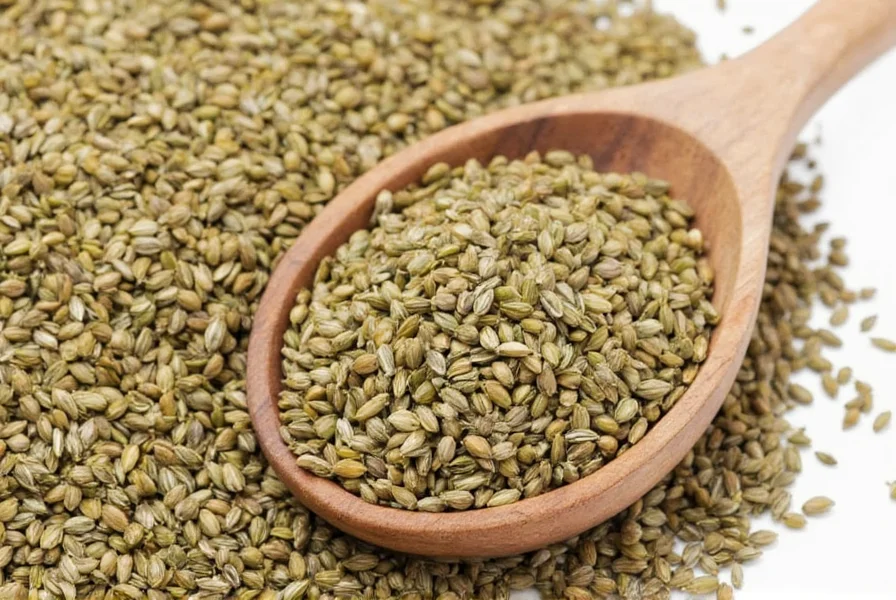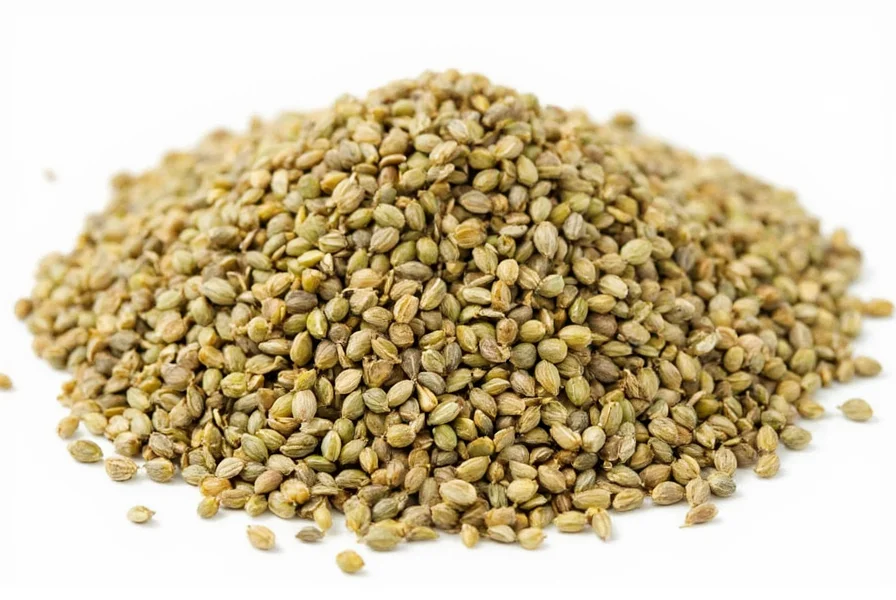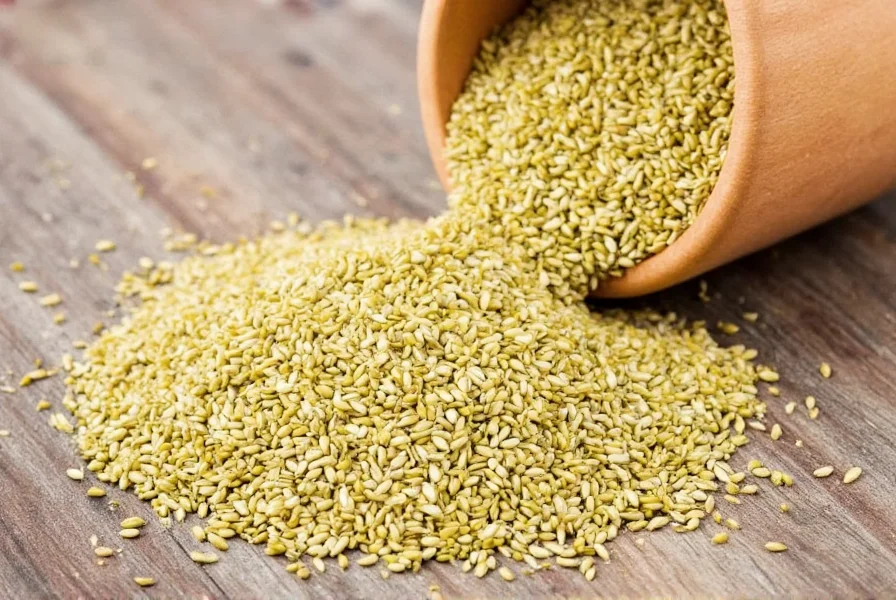When you're in the middle of cooking and realize you're out of fennel seeds, knowing the right substitute can save your recipe. Fennel seeds have a distinctive sweet, licorice-like flavor that's essential in many Mediterranean, Indian, and Italian dishes. Understanding what makes fennel unique helps you choose the best replacement based on your specific culinary needs.
Understanding Fennel Seed Flavor Profile
Fennel seeds contain anethole, the same compound that gives anise and star anise their characteristic licorice flavor. However, fennel offers a more subtle, slightly sweeter profile with herbal notes. When substituting, consider whether your recipe needs the sweet licorice element (common in baking) or the earthier, more savory component (typical in sausage recipes and vegetable dishes).

Top Fennel Seed Substitutes Ranked by Effectiveness
1. Anise Seeds (Best Overall Substitute)
Anise seeds provide the closest flavor match to fennel seeds due to their similar anethole content. They work particularly well in Italian sausage recipes, breads, and desserts. Use a 1:1 substitution ratio, but be aware that anise has a stronger, more pronounced licorice flavor. For delicate dishes, start with 3/4 teaspoon of anise for every 1 teaspoon of fennel seed required.
2. Dill Seeds (Best for Fish and Pickling)
Dill seeds offer a milder alternative with similar visual appearance. While they lack the pronounced licorice note, they provide complementary herbal qualities. Ideal for fish dishes, pickling recipes, and potato salads where fennel is used primarily for texture. Use a 1:1 substitution ratio, but add a pinch of sugar to mimic fennel's sweetness.
3. Caraway Seeds (Best for Hearty Dishes)
Caraway shares fennel's earthy qualities but has a more pungent, slightly peppery profile. Works well in rye bread, sauerkraut, and hearty stews. Use a 3:4 ratio (3/4 teaspoon caraway for every 1 teaspoon fennel) to avoid overwhelming your dish. Caraway's stronger flavor means you'll need less than the fennel amount specified in your recipe.
| Substitute | Ratio (vs Fennel) | Best Used In | Flavor Notes |
|---|---|---|---|
| Anise seeds | 1:1 (or 3:4 for delicate dishes) | Italian sausage, breads, desserts | Stronger licorice flavor, slightly sweeter |
| Dill seeds | 1:1 + pinch of sugar | Fish dishes, pickling, potato salads | Milder, herbal, less licorice |
| Caraway seeds | 3:4 | Rye bread, sauerkraut, stews | Earthy, slightly peppery, less sweet |
| Fennel pollen | 1:4 | Finishing dishes, sauces, dressings | Concentrated fennel flavor, floral notes |
Cuisine-Specific Substitution Recommendations
Italian Cooking
For Italian sausage or tomato-based pasta sauces, anise seeds provide the most authentic replacement. Many traditional Italian recipes actually use anise alongside fennel, so this substitution maintains regional authenticity. When making focaccia or bread recipes, combine 3/4 teaspoon anise seeds with 1/4 teaspoon coriander to better replicate fennel's complex profile.
Indian Cuisine
In Indian recipes like garam masala or certain curry blends, fennel plays a supporting role. Here, a combination of equal parts dill seeds and coriander works better than a single substitute. Use 1/2 teaspoon dill and 1/2 teaspoon coriander for every 1 teaspoon of fennel required. This blend maintains the necessary aromatic complexity without overpowering other spices.
Baking Applications
For sweet applications like biscotti or rye bread, fennel pollen offers the most concentrated flavor match. Since pollen is significantly more potent, use just 1/4 teaspoon of pollen for every 1 teaspoon of fennel seeds. If pollen isn't available, a combination of 1/2 teaspoon anise seeds with 1/4 teaspoon orange zest creates a surprisingly close approximation.

Common Substitution Mistakes to Avoid
Many home cooks mistakenly use star anise as a direct substitute, but this powerful spice requires significant adjustment. One star anise pod equals approximately 1/2 teaspoon of fennel seeds, not a 1:1 ratio. Using too much creates an overwhelmingly licorice-forward dish that lacks fennel's subtlety.
Another common error is substituting fennel bulb when seeds are required. The bulb has a completely different flavor profile and texture that won't work in spice blends or as a direct seed replacement. Save the bulb for salads or roasting, but look to seed alternatives when your recipe specifically calls for fennel seeds.
Creative Solutions When No Direct Substitutes Are Available
If you lack all traditional substitutes, create a custom blend using common pantry spices. For every teaspoon of fennel seeds needed:
- Combine 1/2 teaspoon coriander seeds (lightly crushed)
- Add 1/4 teaspoon celery seeds
- Include a small pinch (1/8 teaspoon) of ground cloves
- Finish with a tiny pinch of sugar
This combination builds complexity that approximates fennel's unique profile. Toast the coriander and celery seeds in a dry pan for 30 seconds before using to enhance their aromatic qualities.
When Substitution Isn't Possible
Some recipes rely so heavily on fennel's distinctive flavor that substitutes simply won't work. Traditional Italian sausage, certain Indian breads like naan, and specific Mediterranean fish preparations may lose their essential character without genuine fennel. In these cases, consider these alternatives:
- Visit a local grocery store for a small quantity of fennel seeds
- Check if a neighbor might have some to borrow
- Temporarily modify the recipe to create a different dish that uses your available ingredients
Frequently Asked Questions
Can I use fennel powder instead of fennel seeds?
Yes, but use only 1/4 teaspoon of fennel powder for every 1 teaspoon of fennel seeds required. Ground spices are more concentrated, so you need significantly less. Add the powder later in the cooking process to preserve its flavor, as heat diminishes ground spice potency faster than whole seeds.
What's the difference between anise and fennel seed substitution?
Anise seeds have a stronger, more pronounced licorice flavor compared to fennel's subtler sweetness. When substituting anise for fennel, use a 3:4 ratio (3/4 teaspoon anise for every 1 teaspoon fennel) in delicate dishes. Anise works better in baking, while fennel's milder profile suits savory applications like sausage and vegetable dishes.
Can I substitute fennel seeds in sausage recipes?
Yes, anise seeds make the best substitute in sausage recipes at a 1:1 ratio. For a more complex flavor, combine 3/4 teaspoon anise seeds with 1/4 teaspoon coriander. Avoid caraway in most sausage applications as its peppery notes can clash with other traditional sausage spices like garlic and paprika.
How do I substitute fennel seeds in baking?
For baking, fennel pollen provides the closest match at a 1:4 ratio (1/4 teaspoon pollen per 1 teaspoon seeds). If unavailable, use anise seeds at a 1:1 ratio but add 1/8 teaspoon orange zest per teaspoon of anise to balance the stronger licorice flavor. In sweet breads, a combination of 1/2 teaspoon anise and 1/4 teaspoon cardamom works well.
Are fennel seeds and dill seeds interchangeable?
Fennel and dill seeds aren't fully interchangeable due to their different flavor profiles, but dill works as a substitute in specific applications. Use dill seeds at a 1:1 ratio in fish dishes, pickling recipes, and potato salads. Add a pinch of sugar to mimic fennel's sweetness. Avoid using dill as a substitute in Italian sausage or bread recipes where the licorice note is essential.











 浙公网安备
33010002000092号
浙公网安备
33010002000092号 浙B2-20120091-4
浙B2-20120091-4